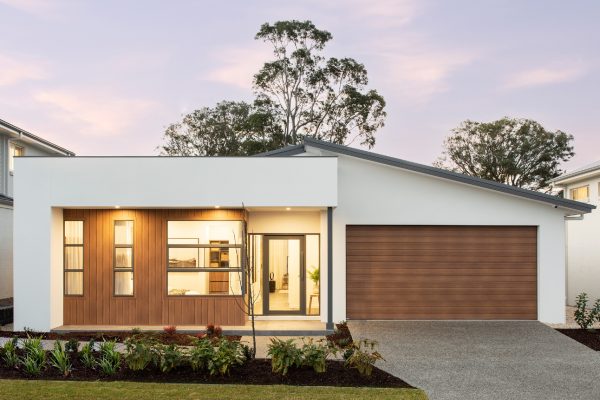
Building or renovating a home is one of the most exciting yet challenging projects you’ll undertake. In New South Wales (NSW), a diverse landscape and vibrant urban environments offer a multitude of design options. Whether you’re dreaming of a sleek modern apartment in Sydney or a serene bushland retreat in the Blue Mountains, choosing the perfect home design requires careful planning and consideration.
King Homes NSW will walk you through the essential steps to select a home design that fits your lifestyle, budget, and aesthetic preferences while complying with local regulations.
1. Understand Your Lifestyle and Needs
Before diving into design options, reflect on your daily routines, family size, hobbies, and future plans.
- Family Size & Growth: Are you planning to expand your family? Do you need extra bedrooms or a flexible space?
- Lifestyle Preferences: Do you prefer open-plan living, outdoor entertaining areas, or quiet retreats?
- Accessibility: Will you need features for aging in place or mobility considerations?
- Work & Study: Do you require dedicated home offices or study areas?
Tip: Make a list of must-have features versus nice-to-have features to prioritize your options.
2. Establish Your Budget
Your budget will significantly influence your home design choices. Consider:
- Construction Costs: Fees for permits, land, materials, and labor.
- Design & Customization: Cost of architectural plans or custom features.
- Additional Expenses: Landscaping, furnishing, and ongoing maintenance.
Tip: Consult with local builders and architects to get realistic cost estimates tailored to NSW markets.
3. Research Local Regulations and Zoning Laws
NSW has specific building codes and zoning laws that impact home design. Key considerations include:
- DA (Development Application) & CDC (Complying Development Certificate): Approval processes for new builds or renovations.
- Setbacks & Height Restrictions: Limits on how close your home can be to property boundaries and maximum building heights.
- Heritage & Environmental Restrictions: Restrictions for heritage-listed areas or environmentally sensitive zones.
Tip: Engage with local councils early to understand compliance requirements and avoid costly redesigns.
4. Choose the Right Location and Land
Your chosen land parcel influences your design options:
- Land Size & Shape: Larger blocks allow for more expansive designs, while narrow lots may require creative space planning.
- Orientation: Maximizing sunlight and natural airflow can improve energy efficiency and comfort.
- Topography: Sloped sites may need specialized designs or retaining structures.
- Surroundings: Consider privacy, views, and proximity to amenities.
Tip: Conduct a site analysis to identify opportunities and constraints before finalizing your land purchase.
5. Decide on a Home Style and Design Theme
Home design NSW offers a variety of architectural styles, from traditional to ultra-modern. Think about:
- Contemporary & Modern: Clean lines, large windows, and open spaces.
- Federation & Victorian: Classic features, decorative elements, and heritage charm.
- Coastal & Hamptons: Light colors, verandas, and relaxed aesthetic.
- Eco-Friendly & Sustainable: Solar panels, passive design, and sustainable materials.
Tip: Browse local neighborhoods and show homes for inspiration and to understand what suits your environment.
6. Work with Professionals
Engaging experienced architects, designers, and builders ensures your vision aligns with technical requirements.
- Architects: Help translate your ideas into detailed plans, considering functionality and aesthetics.
- Designers: Assist with interior layouts, color schemes, and finishes.
- Builders: Ensure your design is feasible within your budget and timeframe.
Tip: Check credentials, reviews, and previous projects to find reputable professionals familiar with NSW regulations.
7. Focus on Sustainability and Energy Efficiency
With NSW’s climate diversity, incorporating sustainable design features can reduce costs and environmental impact.
- Passive Solar Design: Orient windows and living spaces to maximize sunlight.
- Insulation & Ventilation: Enhance comfort and reduce energy bills.
- Rainwater Harvesting & Solar Power: Leverage renewable resources.
- Materials: Use locally sourced, eco-friendly materials.
Tip: NSW offers grants and rebates for sustainable home features—explore these options when planning your design.
8. Plan for Future Needs and Flexibility
A well-designed home considers long-term usability:
- Flexible Spaces: Rooms that can serve multiple purposes.
- Expansion Potential: Design with future additions in mind.
- Accessibility: Features that accommodate aging or mobility needs.
Tip: Think ahead to avoid costly modifications later.
9. Evaluate Your Design Options
Once you have a few design concepts, evaluate them based on:
- Aesthetics: Does the design reflect your style?
- Functionality: Does it meet your needs?
- Cost: Is it within your budget?
- Compliance: Does it adhere to local regulations?
- Environmental Impact: Is it sustainable?
Tip: Use 3D renderings or virtual tours to visualize your future home.
10. Finalize Your Design and Begin the Permitting Process
After selecting your preferred design:
- Work with your professionals to prepare detailed plans.
- Submit applications for necessary permits.
- Schedule construction timelines and milestones.
Tip: Maintain open communication with your team throughout the process to ensure your vision remains intact.
Conclusion
Choosing the perfect King Homes NSW involves a thoughtful blend of lifestyle considerations, budget planning, regulatory compliance, and aesthetic preferences. By thoroughly researching your options, engaging qualified professionals, and planning for sustainability and future needs, you can create a home that’s not only beautiful but also functional, energy-efficient, and compliant with local laws.
Remember, building or renovating a home is a journey—embrace the process, seek expert advice, and enjoy creating a space that truly feels like yours.
Let's Connected
Name: King Homes NSW - Home World Leppington
Address: 21/23 Cato Cct, Leppington NSW 2179, Australia
Phone: +61287950022
Map: https://maps.app.goo.gl/7DjfsWRi3uskiB4C7